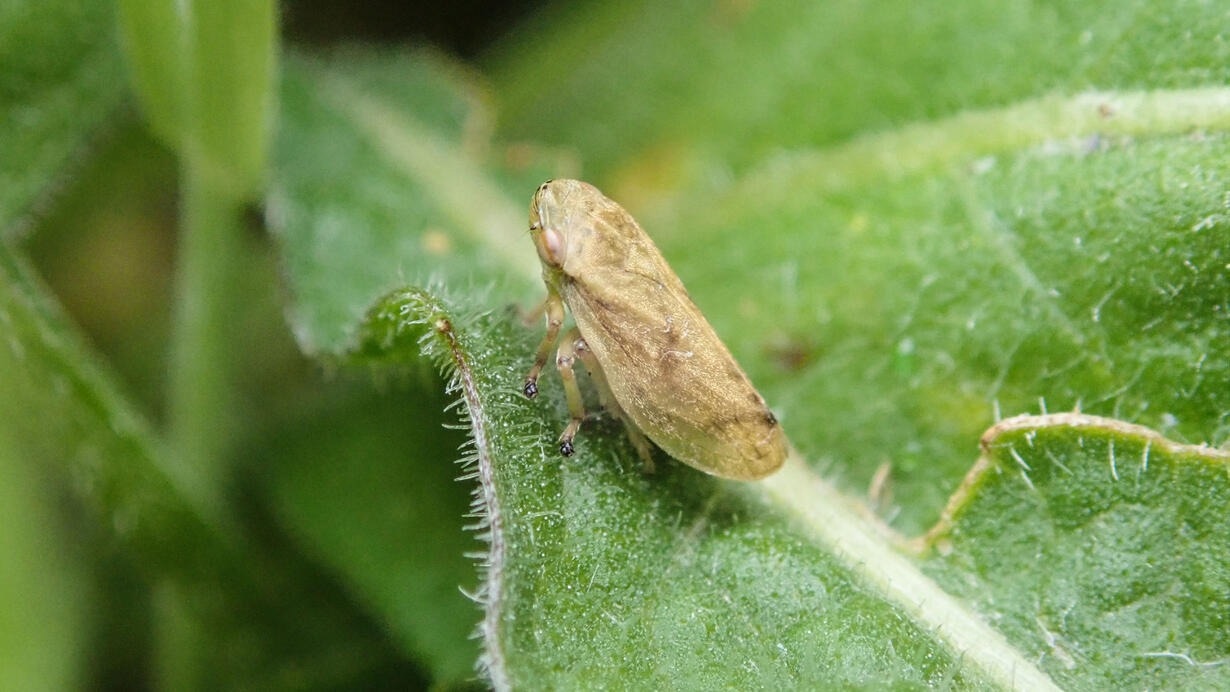Reviewed by Danielle Ellis, B.Sc.Oct 5 2023
The meadow spittlebug, also known as the froghopper, boasts an array of remarkable distinctions. It holds the title of the best jumper among insects when considering its body size.
 An adult meadow spittlebug (Philaenus spumarius). This is the most common of several color forms. Image Credit: © Claire Harkin
An adult meadow spittlebug (Philaenus spumarius). This is the most common of several color forms. Image Credit: © Claire Harkin
It possesses the highest measured sucking power of any bug. Furthermore, it is an exceptional urinator, discharging the equivalent of 2,500 gallons of urine per day in human terms.
The meadow spittlebug has added another notable distinction to its resume. Recent research, published in the journal PLOS ONE, discloses that this tiny insect can feed on a staggering 1,300 species of host plants, surpassing any other insect by more than double.
However, this revelation comes with concerning implications: due to its extensive geographic range and adaptability to diverse climates, ranging from Hawaii to regions just south of the Arctic Circle, the spittlebug poses a significant agricultural threat. This is because it can transmit bacteria from one plant to another as it feeds.
Thirteen hundred host plants means 1,300 opportunities to spread pathogenic bacteria in natural and agricultural environments, a sobering wake-up call.”
Vinton Thompson, Study Lead Author and Research Associate, Division of Invertebrate Zoology, American Museum of Natural History
Meadow spittlebugs, scientifically known as Philaenus spumarius, feed on plant sap using straw-like mouthparts. In the process, they can pick up bacteria, becoming vectors for plant diseases. This includes diseases caused by the bacterium Xylella fastidiosa. Hitchhiking on meadow spittlebugs, X. fastidiosa has inflicted severe damage to crops worldwide, from olive trees in Italy to grapevines in California, citrus trees in South America, and almond trees in Spain.
To better understand which plant species and ecosystems might be vulnerable, Thompson collaborated with researchers in the United Kingdom to catalog the bug's range of host plants.
This comprehensive study involved amalgamating data from various sources, including published research, host records linked to museum specimens, field observations (with many contributions from Thompson, who has been studying spittlebug host plants for half a century), and information collected through a citizen science initiative conducted in Britain from 2019 to 2021. This effort aimed to prepare for the potential introduction of X. fastidiosa to the UK.
Scientists have now definitively confirmed what they had long suspected: the meadow spittlebug has the broadest range of host plants among all insects. It feeds on over 1,300 species of plants belonging to 117 different families. Its host plants encompass a wide spectrum, including ferns, herbs, shrubs, vines, trees, grasses, and forbs.
The spittlebug is the ultimate herbivore champion. It will feed on just about every imaginable kind of vascular plant except those submerged in aquatic environments.”
Claire Harkin, Study Author, University of Sussex
Further research is required to ascertain why spittlebugs can feed on such a wide array of plant types. However, scientists suspect that this ability is linked to the bugs' preference for sap from the xylem, which serves as the plant's primary water-conducting structure.
In contrast to many sap-eating insects that primarily feed from the plant's phloem, which transports sugars and other metabolic compounds, the liquid found in the xylem is relatively consistent across various host plants. This adaptability to a consistent sap source may explain the meadow spittlebug's ability to feed on numerous plant species.
These bugs feed on almost anything they can get at with their mouth parts. Unfortunately, that means there is tremendous potential for the spread of X. fastidiosa in natural ecosystems if it’s introduced. This review is just the first step in thinking about how to control this bug and the diseases it spreads.”
Vinton Thompson, Study Lead Author and Research Associate, Division of Invertebrate Zoology, American Museum of Natural History
Source:
Journal reference:
Thompson, V., et al. (2023) The most polyphagous insect herbivore? Host plant associations of the Meadow spittlebug, Philaenus spumarius (L.). PLOS ONE. doi.org/10.1371/journal.pone.0291734.